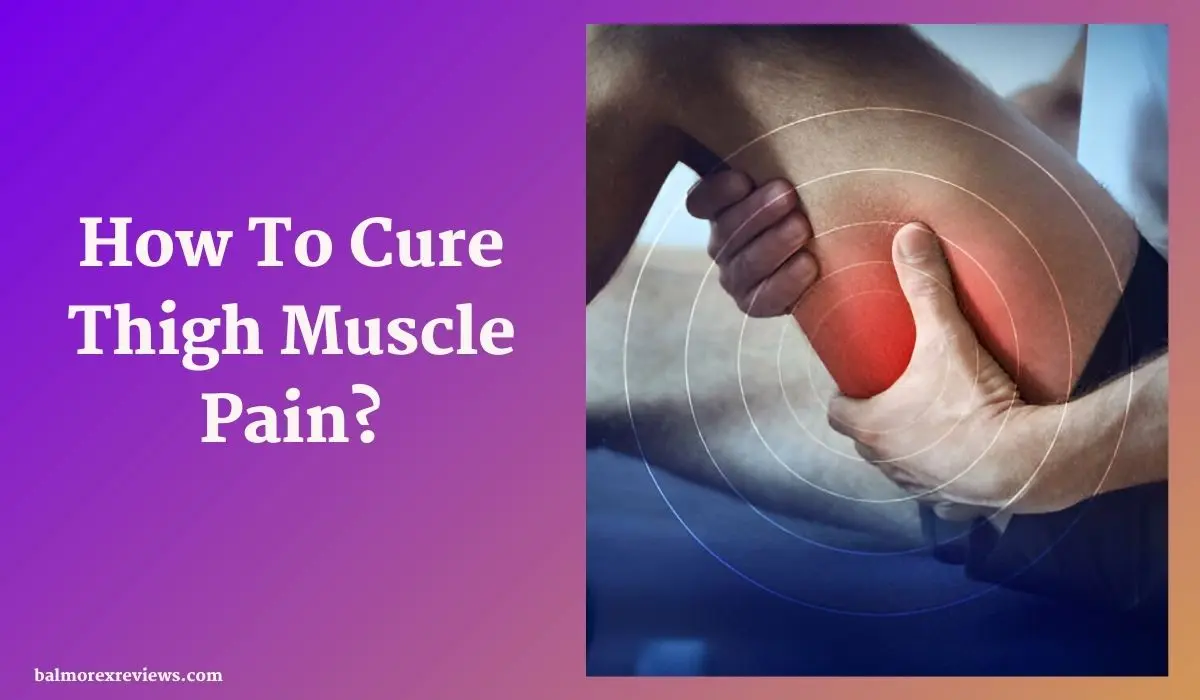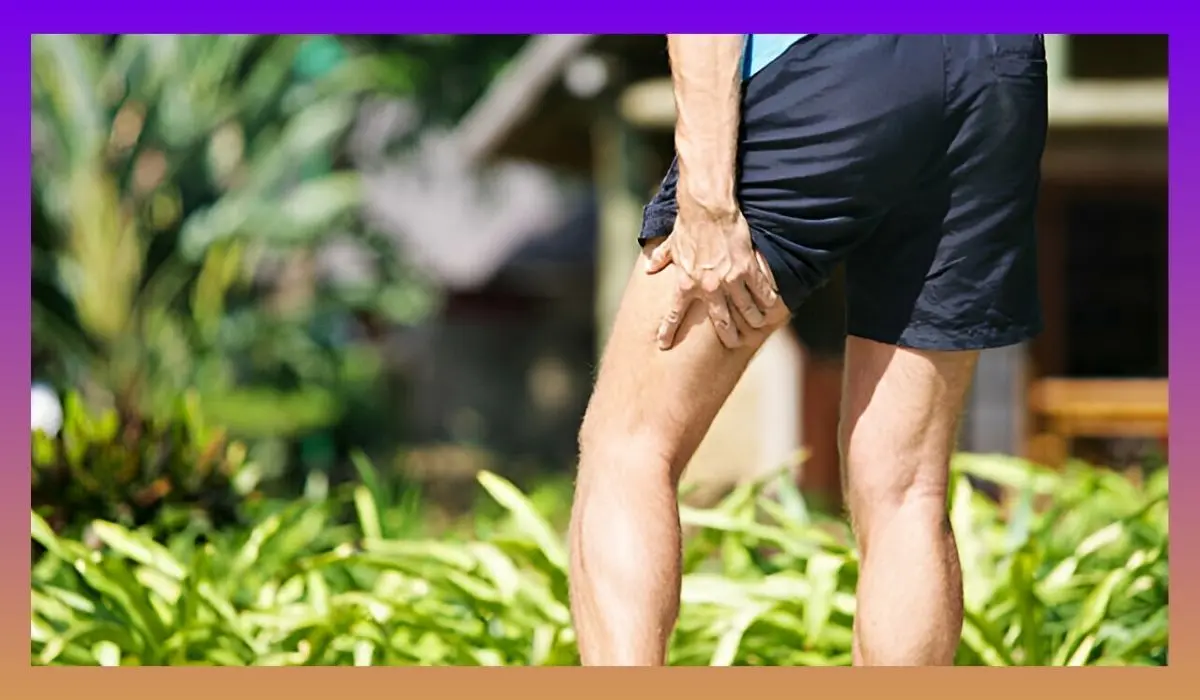How To Cure Thigh Muscle Pain? 10 Effective Home Remedies!
Suffering from thigh muscle pain? Explore 10 powerful home remedies to alleviate discomfort and promote healing. From simple stretches to soothing compresses, discover natural solutions to ease your discomfort and get back to your daily activities pain-free. This comprehensive guide offers practical tips and techniques to effectively treat thigh muscle pain from the comfort of your own home. Say goodbye to discomfort and embrace relief with these proven remedies!

Disclaimer: This article has been generated with the assistance of AI tools. While our research team has fact-checked the content, readers should independently verify information for accuracy and reliability.
Thigh muscle pain can be a debilitating and frustrating experience, impacting your mobility and overall quality of life. Whether you’re an athlete, a fitness enthusiast, or someone who engages in physical activities, thigh muscle pain can strike at any time, leaving you sidelined and seeking relief.
Fortunately, several effective remedies can help alleviate this discomfort and get you back on track. In this blog post, we’ll explore 10 powerful remedies to help you cure thigh muscle pain and regain your freedom of movement.

1. Rest And Recuperation
The first and most crucial step in addressing thigh muscle pain is to allow your body the necessary rest and recuperation time. Overexertion or pushing through the pain can exacerbate the issue and potentially lead to more severe injuries. Take a break from strenuous activities and give your thigh muscles a chance to recover and heal.
2. Cold Therapy
Applying cold therapy, such as ice packs or cold compresses, to the affected area can help reduce inflammation and numb the pain. Cold therapy constricts blood vessels and reduces swelling, providing relief from muscle soreness. Apply the cold pack for 15-20 minutes, several times a day, until the pain subsides.
3. Heat Therapy
While cold therapy is effective in the initial stages of muscle pain, heat therapy can be beneficial for chronic or recurring thigh muscle pain. The warmth helps increase blood flow to the area, promoting healing and relaxation of the tense muscles. You can use a heating pad, or warm towel, or take a warm bath to alleviate the pain.
4. Gentle Stretching
Gentle stretching exercises can help improve flexibility and range of motion in the thigh muscles, reducing the risk of further injury or discomfort. Focus on stretches that target the quadriceps, hamstrings, and hip flexors. Always warm up before stretching and avoid pushing yourself too hard, as this can exacerbate the pain.
5. Massage
Massage therapy can be an excellent remedy for thigh muscle pain. A skilled massage therapist can apply various techniques, such as deep tissue massage, trigger point therapy, or sports massage, to release tension and improve blood circulation in the affected area. Regular massage sessions can help prevent future muscle tightness and discomfort.
6. Over-the-Counter Pain Medication
If the pain is severe, consider taking over-the-counter pain medication, such as acetaminophen or ibuprofen, to alleviate the discomfort. These medications can help reduce inflammation and provide temporary relief. However, it’s important to follow the dosage instructions and consult with a healthcare professional if the pain persists or worsens.
7. Epsom Salt Baths
Soaking in an Epsom salt bath can work wonders for thigh muscle pain. The magnesium and sulfate compounds found in Epsom salts can help relax tense muscles and reduce inflammation. Add two cups of Epsom salts to a warm bath and soak for 20-30 minutes, allowing your body to absorb the therapeutic benefits.
8. Foam Rolling
Foam rolling, also known as self-myofascial release, is an effective technique for alleviating thigh muscle pain. By applying gentle pressure to the affected areas using a foam roller, you can help release tension, improve circulation, and reduce muscle soreness. Slowly roll over the tight or painful spots, focusing on the quadriceps, hamstrings, and IT band.
9. Strength Training
While it may seem counterintuitive, incorporating strength training exercises into your routine can help prevent and alleviate thigh muscle pain in the long run. Strengthening the muscles in your legs can improve their endurance and reduce the risk of future injuries or strains. However, it’s crucial to start slowly and gradually increase the intensity to avoid further aggravating the pain.
10. Lifestyle Adjustments
Finally, consider making lifestyle adjustments to address the root cause of your thigh muscle pain. Factors such as poor posture, improper footwear, or repetitive movements can contribute to muscle imbalances and strain. Evaluate your daily activities, exercise routine, and ergonomic setup, and make necessary changes to alleviate the stress on your thigh muscles.
Takeaways
It’s important to note that persistent or severe thigh muscle pain may be an indication of an underlying condition or injury that requires medical attention. If the pain persists despite trying these remedies, it’s advisable to consult with a healthcare professional, such as a physical therapist or orthopedist, for proper diagnosis and treatment.
Thigh muscle pain can be a frustrating and limiting experience, but by incorporating these effective remedies into your routine, you can find relief and regain your mobility. Remember to listen to your body, practice patience, and seek professional guidance if needed. With the right approach, you can cure thigh muscle pain and get back to enjoying your favorite activities without discomfort.
Natalie Smith
Natalie Smith is a highly respected Osteopath with over 15 years of experience in treating a wide range of musculoskeletal conditions. She graduated from the British School of Osteopathy with a Master’s degree in Osteopathic Medicine and is a registered member of the General Osteopathic Council. Natalie’s expertise spans the diagnosis and treatment of issues affecting the muscles, bones, joints, and connective tissues. She utilizes a holistic, patient-centered approach, combining manual techniques such as spinal manipulation, soft tissue massage, and joint mobilization to alleviate pain and restore optimal function. Passionate about educating her patients, Natalie frequently speaks at local health workshops and has authored articles on osteopathic care for several respected medical journals. Her commitment to ongoing professional development ensures she remains at the forefront of the latest advancements in the field of osteopathy.
